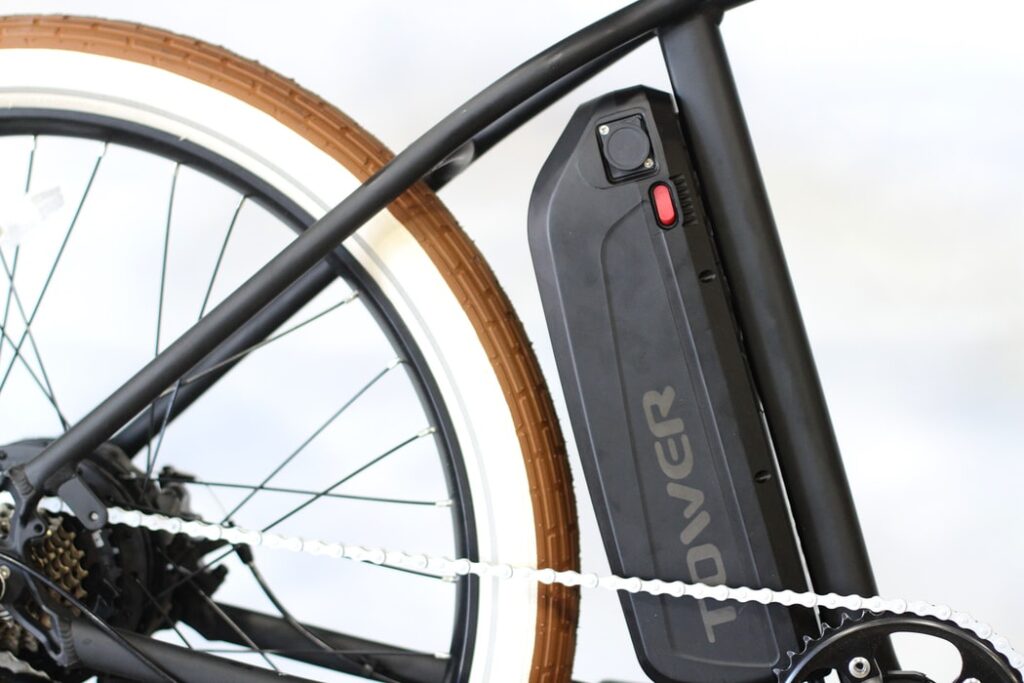How to Test an Aged E-Bike Battery, And Know it’s in Working Order

When it comes to an e-bike, the battery is the single most important part of the system. The battery is the heart of the e-bike, and without it, your e-bike is pretty much a regular bicycle.
With the use of lithium batteries in many of the modern e-bikes, being able to test battery efficiency and life is now more accessible than ever.
Older and heavier lead batteries are being phased out because of potentially hazardous materials and the possible danger of testing, and frequent testing and care are incredibly crucial to your e-bike battery.
Table of Contents
How Do I Test My Battery?
An e-bike battery can be tested in a few different ways, these include testing:
• Voltage – this is the measurement given to the pressure of charged electrons (the current) through a conducting loop, measured in Volts.
• Current – is the rate at which electrons flow past a point in a complete electrical circuit, measured in Amps.
• Resistance – the hindrance to the flow of charge through an electric circuit, measured in Ohms.
These three measurements give users the information they need to establish the heath of their e-bike battery, be this a brand new one from the factory, an older battery that has been sitting in a warehouse, or even from a pre-owned e-bike.
Knowing the original numbers offers great insight into how your battery is doing as you can compare the age against the loss of numbers. Conveniently, these numbers are often printed on the battery.
Step by Step Guide to Testing
Advisory note: while using a multimeter is typically a simple task, some e-bike batteries can be sensitive to short circuits or being overloaded. Ensure that you aren’t testing for voltage higher than the battery is configured for.
• Step 1 is to ensure that the battery is charged and that the power is disconnected.
• Step 2, connect the multimeter to the battery. The hardback style of e-bike batteries will have their connections located either on the back or underneath the top cover.
Other types of batteries may need an adapter to connect, so check this before you get started. If you have a prong system and you are using this to check the charging port, you can simply insert the positive prong (typically red) into the charging port of the battery.
• Step 3, tests can be run on the battery or even individual cells once the multimeter is correctly connected to the battery. Before running any tests, it is important to ensure that positive and negative ports are connected to the correct place and that the connection is firm and secure.
• Step 4, always use DC when testing your e-bike battery as AC can cause overloading and potentially catastrophic damage to the battery cells.
Check the e-bike user guide and safety instructions for accurate information about the battery and never test the battery for higher for more volts than is indicated as this will damage your battery beyond repair.
How To Take a Measurement of your Battery
Precise measurements should be taken with a battery multimeter, as these are designed for the specific purpose of measuring and providing interpreted data on battery health.
The multimeter is a fairly easy to use device, that will connect to the battery and allow the user to select the type of reading they want, this will then be displayed on the screen, and the user can compare this against the “base” numbers, printed on the battery or available from the manufacturer.
The ability to perform these tests is a good way to keep an eye on the battery health of your e-bike.
Something to be aware of before you begin testing is making sure that the battery is fully charged, as this is what the base numbers are taken from. Users should also ensure that the battery is disconnected and safe to handle and use their multimeter on.
Not all batteries can be removed from the bike frame, so ensure that if you cannot remove it that you have followed the instructions to make the battery safe for testing.
When the battery has been made safe, the first test we recommend is the load battery option. Once you have established the numbers for the load battery test, then you should be able to follow the checklist:
• Battery voltage – test the numbers and see if these match the manufacturer specs.
• Battery current – this reading will tell you the current capacity of the battery. This is a great test to see how an older battery has decayed since it was new.
• Battery resistance – you are looking for a lower number here as a high number will indicate that the flow of electricity in the battery is weak.
These are great tests that can be performed without a great deal of technical or electrical knowledge but will give you an overall indicator of how healthy your e-bike battery is.
ADVISORY NOTE: Ensure that the multimeter is correctly applied to the terminals on the battery to prevent shocks or short circuits. If you are in doubt, then your local dealership or the e-bike manufacturer will be happy to provide you advice on your type of battery and how to correctly (and safely) attach a multimeter to your battery.
The Best Multimeters For An E-Bike?
After conducting much research into the best multimeter for conducting tests on e-bike batteries, I found we concur with most of the advice out there on the best two that you can get. However, even if you find that you would prefer something else, that is achievable thanks to the cheap nurture of many of these gadgets. For us, the best two multimeters are:
• The Fluke 117 – Electricians Digital Multimeter – hardwearing and ideal for e-bike riders, thanks to its rugged construction, although on the expensive side.
The Fluke 117 is small but mighty and will offer features that are optimal for e-bike batteries. The Fluke 117 will also allow users to choose the DC functions so as not to overload the e-bike battery and cause burnout.
• The Klein Tools MM600 HVAC Multimeter – firstly, consumers will notice that this model comes highly recommended while being the cheaper option.
Holding a CAT IV 600V/CAT III 100V safety rating, the Klien Tools multimeter is absolutely ideal for e-bike batteries, even being very portable at 10 x 5.6 x 2.7 inches and uses DC current to be safe for testing e-bike batteries.
When To Measure Your E-Bike Battery
As technology advances, many e-bikes come standard with a battery monitoring system that will give a reasonably accurate reading about the current battery condition.
However, these displays don’t really provide in-depth information about your e-bike battery, such as how the capacity has decayed or if the voltage is still substantial.
When a battery is older than 6 months is when you should start testing and monitoring the battery for any signs of a drop in performance and to ensure that you are still getting the capacity that was shipped with the e-bike.
Another essential time is if you purchase a pre-owned
e-bike, the first thing you should be doing is testing that battery.
As we mentioned at the start, the battery is the most important component to an e-bike, buying pre-owned, you need to ensure that you aren’t buying a regular bicycle that will cost more money on top of what you paid, just because the battery needs to be replaced.
What if E-Bike Battery Won’t Charge?
This is a common problem that users encounter and one that has many causes, thus many solutions.
Firstly, the charger could be damaged and in need of replacement. This is very frustrating but always fixable with the purchase of a replacement charger that can be found online and with various retailers.
Another issue that is commonly found with e-bike batteries that do not charge is that they have been depleted so far that the microchip in the battery management system (BMS) no longer recognizes that it is receiving a charge from the recharging port.
A way that has anecdotally been recommended is to spin the wheel connected to the charger in reverse, and this can sometimes trigger the microchip to accept a charge. However, if this doesn’t work, then a new battery might be required.
With many non-charging batteries, running a test with a multimeter will reveal possible causes to see the overall health of the battery; however, lithium batteries have a half-life before they completely decay and require replacement.
Can an E-Bike Battery Be Repaired?
This is a common question that is asked frequently. The simple answer is, “yes, technically.” The reason for this is that the majority of e-bikes carry lithium batteries.
When these are two years old or older, it is likely that the battery cells have lived their lifecycle and need to be replaced. The nature of the lithium battery cells means that once these have stopped working that they must be replaced.
If you are adept at repairs and electrical maintenance then there are a few things you can do to replace these cells.
1. Open the battery case, carefully.
2. Remove the battery cells making sure not to cut the parallel link, only the series connection.
3. Using a multimeter, test the performance of the battery voltage. Anything below 10.8 could indicate that a cell needs to be replaced.
4. After testing the cells, safely dispose of the damaged cells and replace with new cells. Carefully rewire these.
5. Replace the rewired battery cells back into the battery box before resealing the unit and testing that the voltage, current, and resistance is correct and then reinstall to your e-bike.
Final Thought
A quality multimeter is an effective tool for monitoring the life and condition of an e-bike battery, and having one around when purchasing pre-owned e-bikes or even with your aging e-bike battery is highly advisable.
Easy to use, understand, and portable they really do help. The use of a multimeter will let you know exactly how your battery is performing and will let you know before the battery fails—potentially saving you the problem of the battery dying mid-ride.
Being able to check a battery in a pinch is a very useful ability to have, and these provide far more accurate readings that the handlebar battery display.



